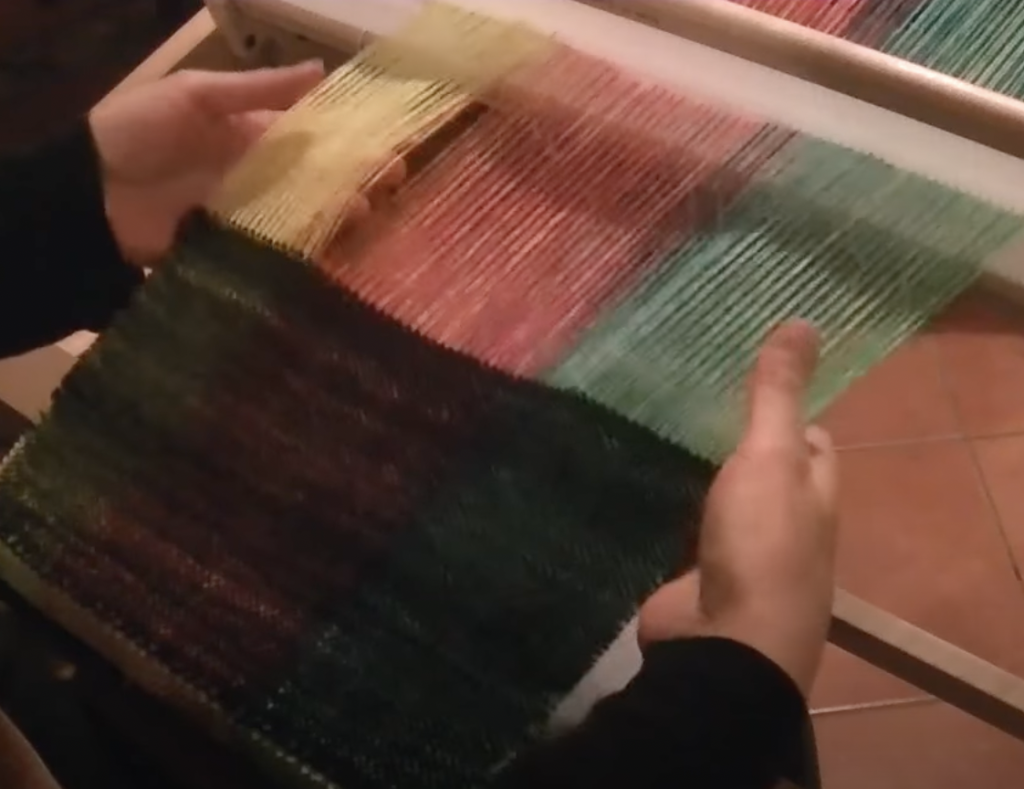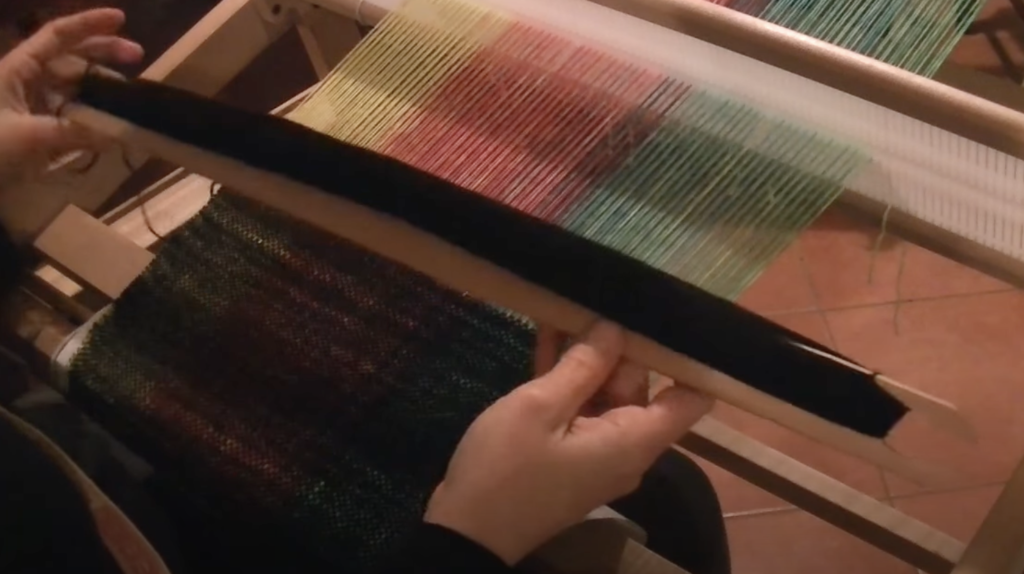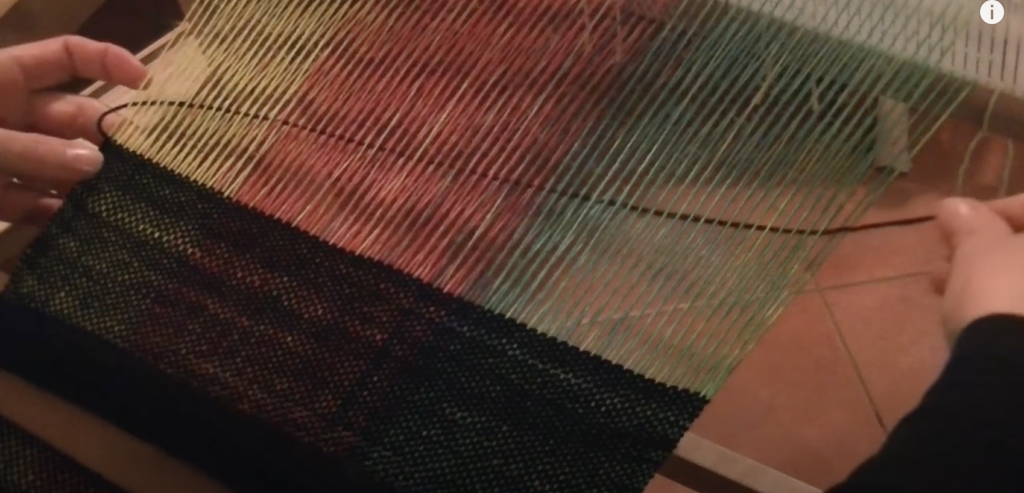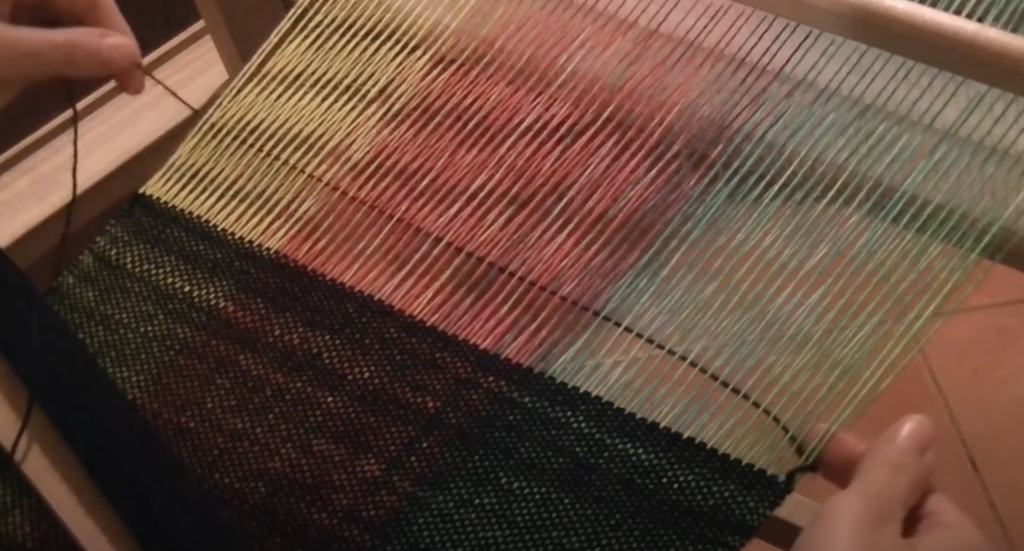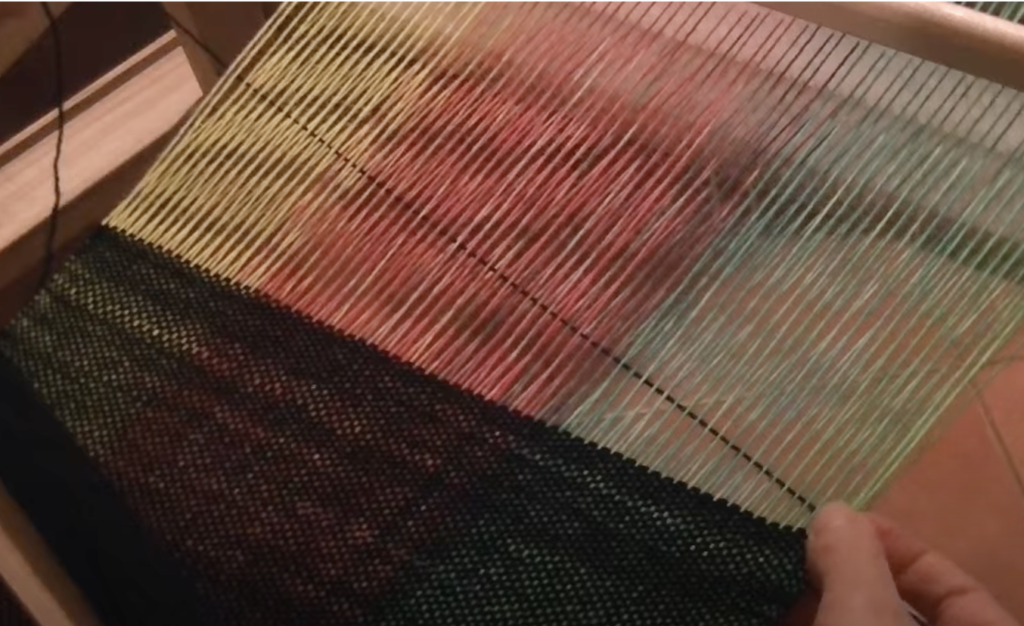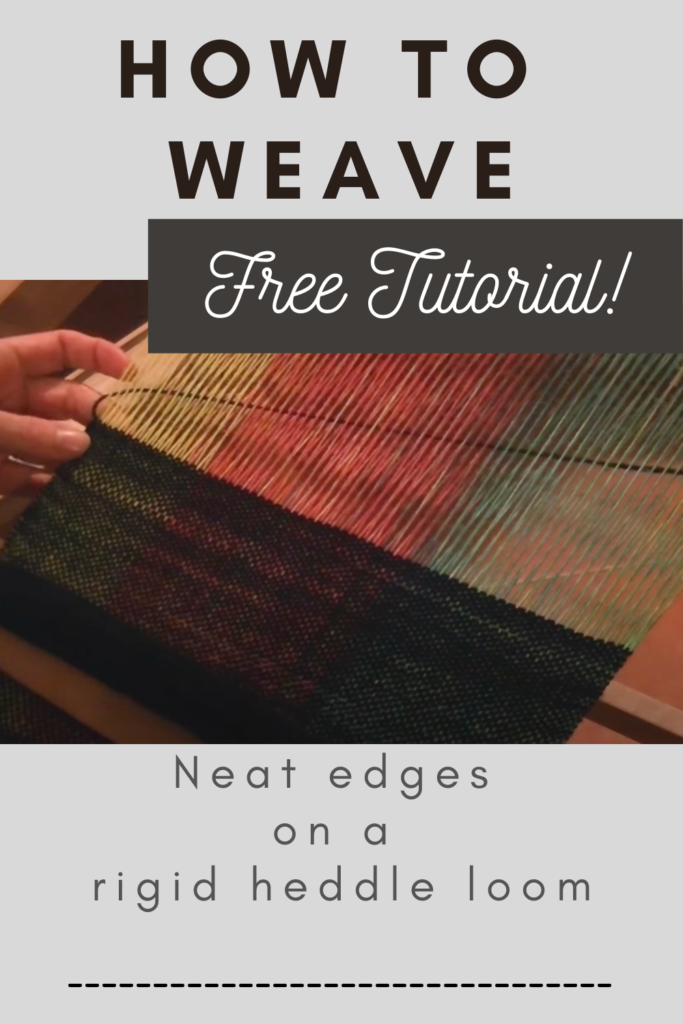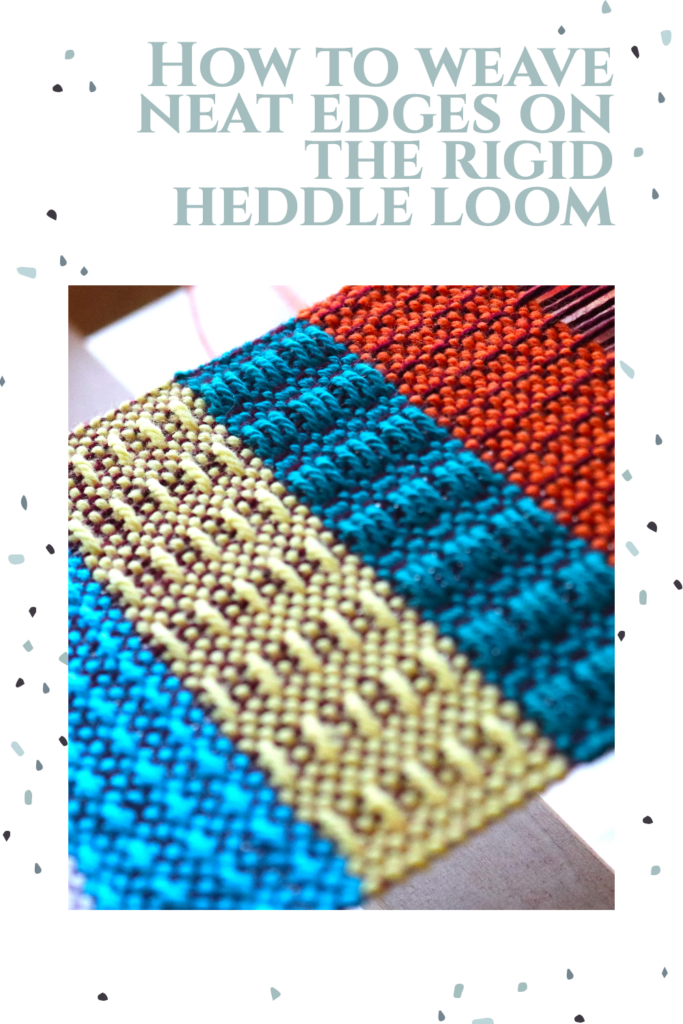Ah, neat edges, aren’t they every weaver’s dream?
While I do think that sometimes we can tend to over obsess about obtaining the neatest edges possible, I still have to acknowledge that straight edges on hand woven fabric are a joy to behold.
Today’s Ask Kelly question addresses the straight edges conundrum and provides some specific steps that I know will make a difference to your woven edges. I’ll be particularly speaking to weaving neater edges on a rigid heddle loom.
Read right to the end to find links for further learning!
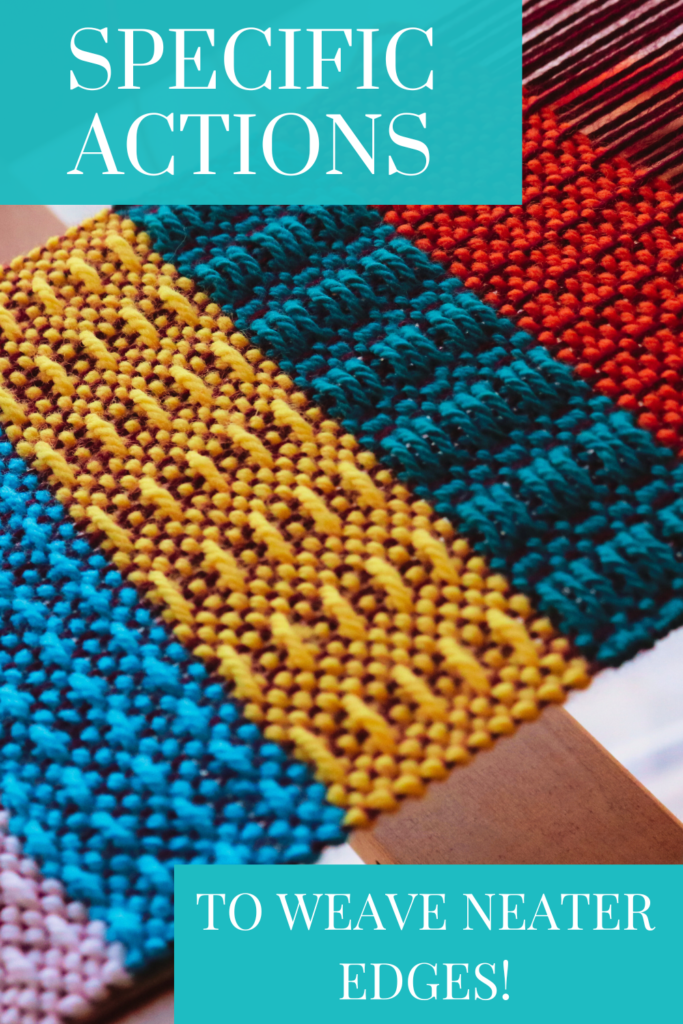
“Thanks for your very informative weaving videos. I have been learning a lot. I am a brand new weaver (month one) and have done a few projects on my Cricket rigid heddle loom. Still learning the terminology and have definitely not been able to get straight edges even after watching your video about it. Need more details about what you are doing specifically – you make it look easy but mine do not look like yours.“
Denise
Hi Denise,
Neat edges are one of the biggest challenges to the newer weaver and probably what I get asked about the most 😊
Yes, you do need to be patient and get lots of practice in. Over time you will start to notice a difference. You will start to understand more about what good warp tension feels like (this is actually crucial to weaving neat edges), you will get to know different yarns, weave structures etc.
You may also be interested in trying a technique where you thread both edge threads in a hole. This helps your edge threads to be under a more similar tension and can make a big difference to how your edges look. I have a video for doing that here-
Of course, there is so much more I could say on this topic, but I’m trying to focus on the main points that will make a difference to your weaving.
An important point to make is that if you’re weaving anything other than plain weave, your best bet will be to install floating selvedges to ensure that your weft thread always wraps at the edges. Floating selvedges are easy to install, check out these resources:
How to use floating selvedges…
So, what about those specific actions for neater edges?
- Really good warp tension.
- The pinching technique
- Angled weft
- Correct weft tension
- Appropriate yarns
Great warp tension is really essential to neat edges (and to a successful project too!) You can learn more about how to obtain great warp tension in these online classes:
Setting up for Success class (member’s only)
And here are some more resources to help set you on the journey of weaving neater edges:
Troubleshooting loose slot threads…
Yet another neat edges tutorial…
*This post may contain affiliate links. For further information, please see my disclosure policy.
The last point that I want to make is to not worry if your edges are less than perfect. The best solution to slightly wonky woven edges is really just time and practice. Your edges will get better, just keep going!
Until next time…
Happy Weaving!

